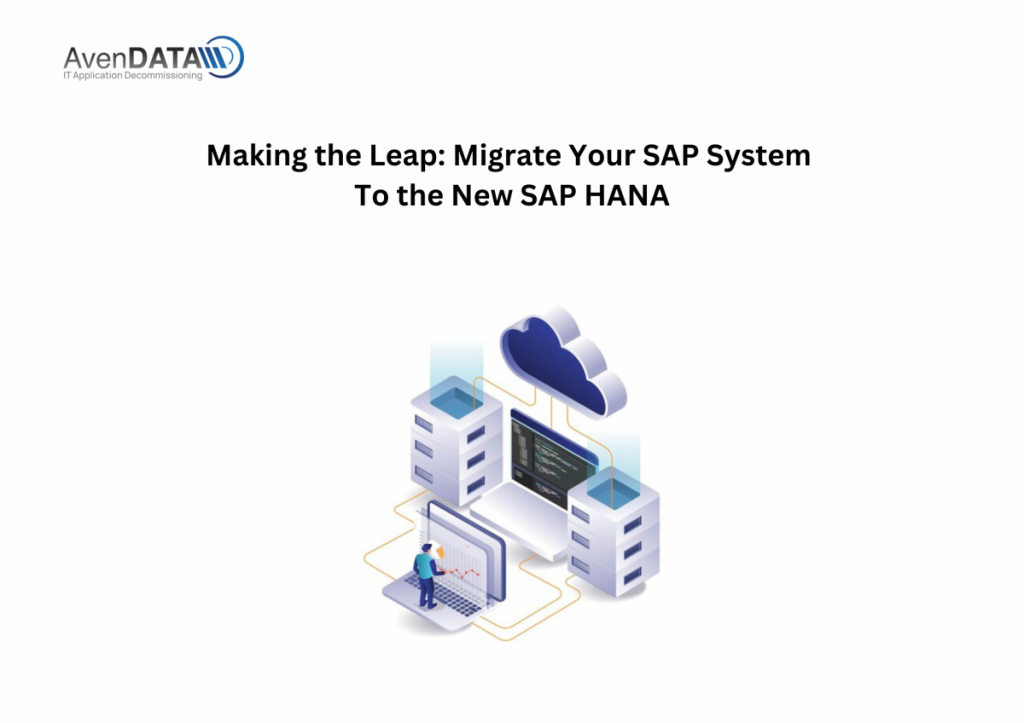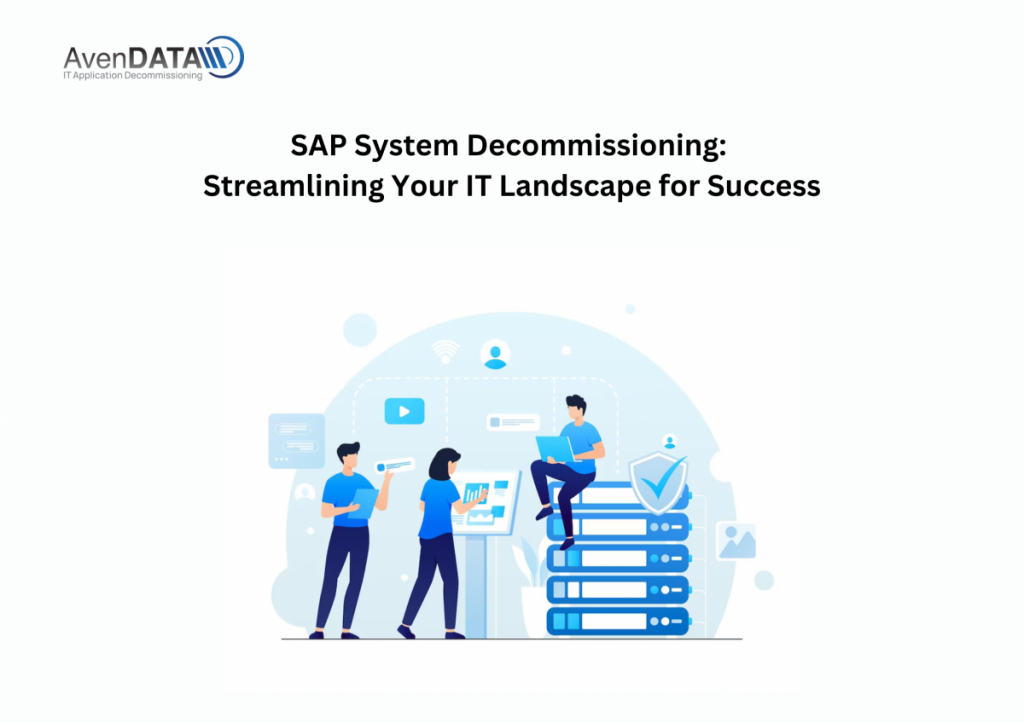In the ever-evolving landscape of enterprise technology, staying ahead of the curve is imperative for businesses seeking to maintain their competitive edge. SAP HANA, with its in-memory computing capa... View MoreIn the ever-evolving landscape of enterprise technology, staying ahead of the curve is imperative for businesses seeking to maintain their competitive edge. SAP HANA, with its in-memory computing capabilities, has revolutionized the world of enterprise resource planning (ERP) systems. Migrating your existing SAP system to SAP HANA is a strategic move that promises improved performance, real-time analytics, and enhanced agility. In this blog, we’ll explore the significance of migrating to SAP HANA and the steps involved in this transformational journey.
The Significance of Migrating to SAP HANA
SAP HANA, short for High-Performance Analytic Appliance, is SAP’s revolutionary in-memory database management system. Its architecture allows for lightning-fast data processing and real-time analytics, enabling businesses to make quicker, data-driven decisions. Here’s why migrating to SAP HANA is a game-changer:
1. Lightning-Fast Performance:
— SAP HANA’s in-memory technology accelerates data processing, resulting in significantly faster application performance. Complex queries that used to take minutes now execute in seconds.
2. Real-Time Analytics:
— With SAP HANA, businesses can access real-time insights from their data, enabling faster responses to market changes and customer demands.
3. Simplified IT Landscape:
— Migrating to SAP HANA can lead to IT landscape simplification by eliminating the need for separate data warehousing solutions and reducing data duplication.
4. Enhanced User Experience:
— SAP HANA’s speed and efficiency translate into a smoother, more responsive user experience, boosting productivity across the organization.
5. Advanced Analytics and AI:
— SAP HANA opens the door to advanced analytics, machine learning, and artificial intelligence capabilities, allowing businesses to uncover deeper insights and automate processes.
Steps for Migrating to SAP HANA
Migrating to SAP HANA is a multi-step process that requires careful planning and execution. Here’s a high-level overview of the key steps involved:
1. Assessment and Planning:
— Begin with a comprehensive assessment of your existing SAP landscape to understand the scope, dependencies, and potential challenges of the migration.
2. System Sizing:
— Determine the appropriate hardware and infrastructure requirements for your SAP HANA environment based on your organization’s needs.
3. Data Preprocessing:
— Cleanse and optimize your data to ensure a smooth transition to SAP HANA. This may involve data archiving, compression, and data quality improvements.
4. Migration Strategy:
— Develop a migration strategy that outlines the sequence and timing of migrating your SAP systems to HANA. This may include selecting a migration method (e.g., system copy, database migration option).
5. Testing and Validation:
— Create a testing environment to validate the migration process. Test data and business scenarios thoroughly to ensure data integrity and system functionality.
6. Data Migration:
— Execute the actual data migration to SAP HANA, ensuring minimal downtime and data consistency.
7. Application Migration:
— Migrate your SAP applications and customizations to work seamlessly with SAP HANA. Adapt any code or configurations as needed.
8. User Training:
— Train your users and IT staff to leverage the new features and capabilities of SAP HANA effectively.
9. Post-Migration Testing:
— Conduct thorough testing after the migration to confirm that all systems, applications, and data are functioning correctly.
10. Monitoring and Optimization:
— Continuously monitor your SAP HANA environment for performance and optimize configurations as necessary to ensure optimal operation.
Conclusion
Migrating your SAP system to SAP HANA is a transformative journey that empowers your organization with enhanced performance, real-time insights, and advanced analytics capabilities. However, it’s essential to approach the migration process systematically and with careful planning to ensure a seamless transition. With the right strategy and execution, your business can unlock the full potential of SAP HANA and remain agile in today’s dynamic business landscape.
To know more, click on the link: https://avendata.com/ca/migrate-old-sap-system-to-new-sap-hana
#AvenDATA #SAPHana #Sapsystem #sapdata #Itsystems #legacysystem #ITlegacysystem
SAP System Decommissioning: Streamlining Your IT Landscape for Success
In the ever-evolving realm of enterprise resource planning (ERP) systems, SAP has stood the test of time as a leading solution f... View MoreSAP System Decommissioning: Streamlining Your IT Landscape for Success
In the ever-evolving realm of enterprise resource planning (ERP) systems, SAP has stood the test of time as a leading solution for businesses worldwide. Over the years, organizations have implemented SAP systems to streamline their operations, enhance productivity, and gain a competitive edge. However, as technology advances and business needs change, there comes a point when decommissioning an SAP system becomes a strategic necessity. In this blog, we’ll explore SAP system decommissioning, its significance, and the steps involved in this crucial process.
Understanding SAP System Decommissioning
SAP system decommissioning refers to the planned retirement or shutdown of an existing SAP system. This decision typically arises due to various reasons, including:
1. System Obsolescence: Over time, SAP systems may become outdated, running on legacy hardware or software that is no longer sustainable or supported.
2. Mergers and Acquisitions: When organizations merge or acquire others, they may need to consolidate IT resources and eliminate redundant systems, including SAP instances.
3. Cost Efficiency: Decommissioning can lead to cost savings by reducing maintenance, licensing, and operational expenses associated with maintaining older SAP systems.
4. Simplification: Simplifying the IT landscape by decommissioning SAP systems can make it easier to manage and align with current business objectives.
5. Compliance and Security: Decommissioning can help organizations meet compliance requirements and enhance security by reducing the attack surface.
Key Steps in SAP System Decommissioning
Decommissioning an SAP system is a structured process that requires careful planning and execution. Here are the key steps involved:
1. Assessment and Planning:
— Begin by conducting a comprehensive assessment of the SAP system slated for decommissioning. Identify its dependencies, usage patterns, and data storage.
2. Data Migration:
— Determine what data needs to be retained, archived, or purged. Migrate important historical data to a secure storage location or archive system.
3. Dependency Analysis:
— Identify any interfaces, integrations, or custom applications that rely on the SAP system being decommissioned. Plan for the redirection or reconfiguration of these dependencies.
4. Documentation:
— Document the SAP system’s configurations, customizations, and integration points for reference during decommissioning and potential future audits.
5. Backup and Verification:
— Create backups of critical data and configurations before initiating the decommissioning process. Verify the integrity of backups.
6. Decommission the System:
— Gradually phase out the SAP system, ensuring that all data is safely archived or migrated. Disable user access, shut down servers, and release hardware resources.
7. Communication:
— Communicate the decommissioning process to relevant stakeholders, including end-users, IT teams, and management, to manage expectations and ensure a smooth transition.
8. Testing and Validation:
— Verify that data migration, backups, and decommissioning were successful. Test and validate dependent systems to ensure uninterrupted operations.
9. Archiving and Retention:
— Store archived SAP data securely, ensuring it complies with regulatory requirements and is accessible if needed for future audits or reference.
10. Documentation Update:
— Update documentation to reflect the decommissioned status of the SAP system. Ensure that all stakeholders are aware of the change.
Conclusion
SAP system decommissioning is a critical process that helps organizations optimize their IT landscape, reduce costs, and stay compliant with evolving regulations. Proper planning, thorough assessment, and meticulous execution are key to a successful decommissioning effort. By embracing this strategic approach, organizations can ensure that their IT resources remain aligned with their ever-changing business needs and technology landscapes.
To know more, click on the link: https://avendata.com/ca/migrate-old-sap-system-to-new-sap-hana
#AvenDATA #SAPHana #Sapsystem #systemdecomissioning #sapdata #Itsystems
page=1&year=&month=&hashtagsearch=sapdata
Load More


